Greek Sculpture and Architecture Quiz
1/29
There's no tags or description
Looks like no tags are added yet.
Name | Mastery | Learn | Test | Matching | Spaced |
|---|
No study sessions yet.
30 Terms
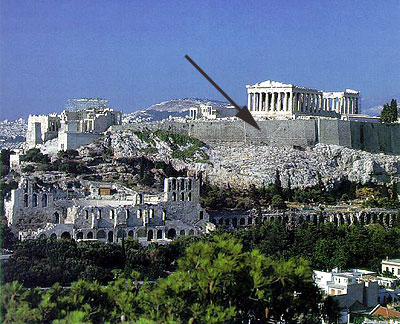
What is this natural rock formation called?
Acropolis
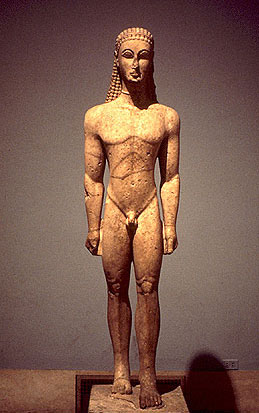
What period is this statue from?
The Archaic Period
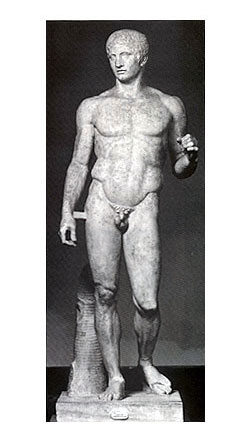
What time period is this statue from?
The Classical Period
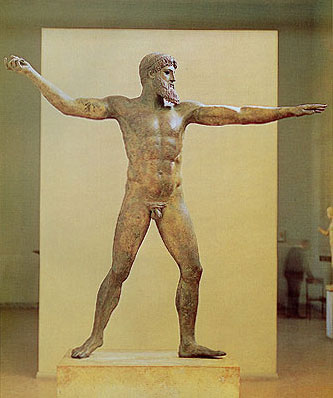
What time period is this statue from?
The Classical Period
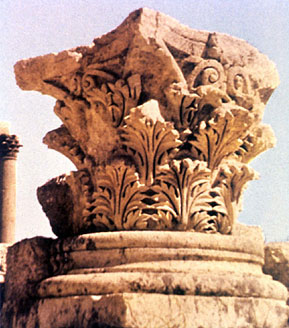
What kind of column is this?
Corinthian
During what period were Greek statues most similar to Egyptian statues?
The Archaic Period
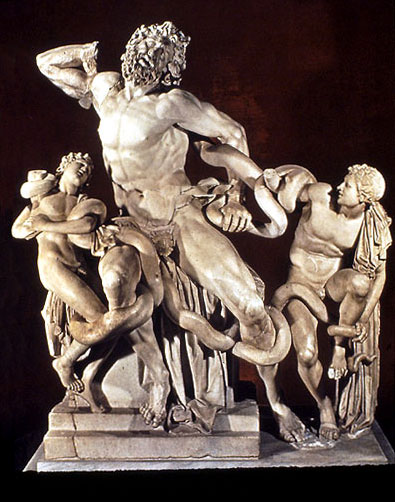
What time period is this statue from?
The Hellenistic Period
During what period did sculptors idealize their subject matter?
The Classical Period
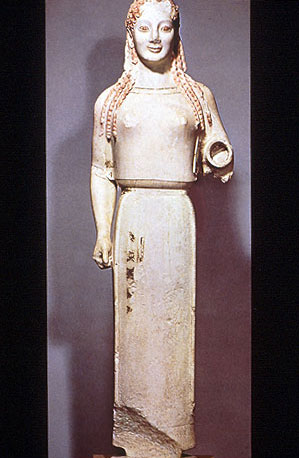
What is this kind of statue called?
Kore
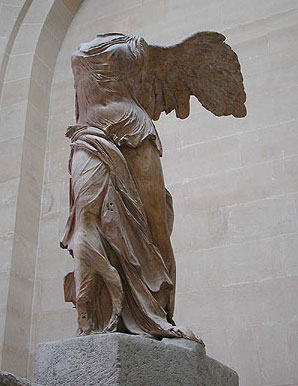
What is the name of this famous statue?
Nike of Samothrace
What type of construction was used to make Greek temples?
post and lintel
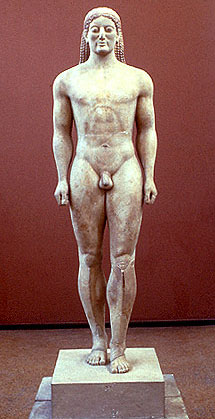
What time period is this statue from?
The Archaic Period
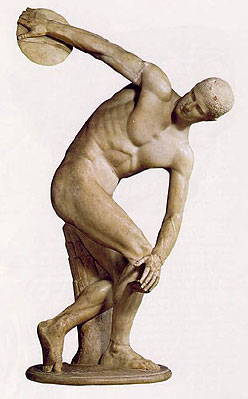
What time period are these statues from?
The Classical Period
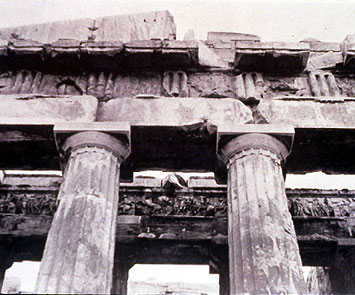
What kind of columns are these?
Doric
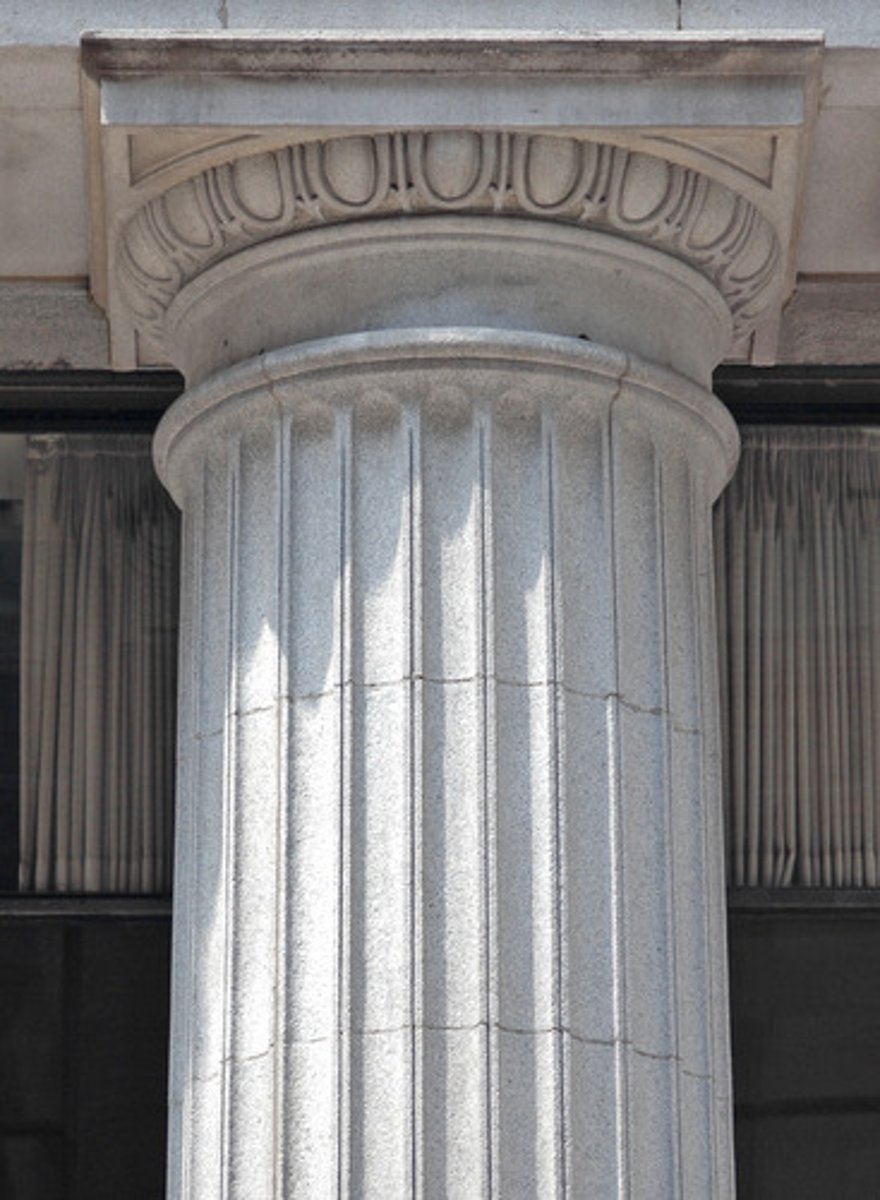
During what time period did sculptors show the full range of emotions in their statues?
The Hellenistic Period
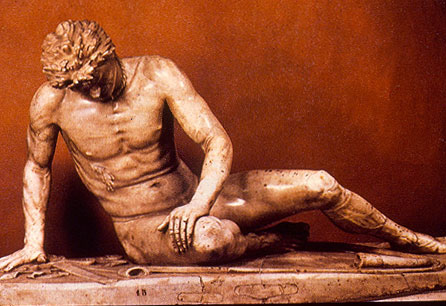
What time period is this statue from?
The Hellenistic Period
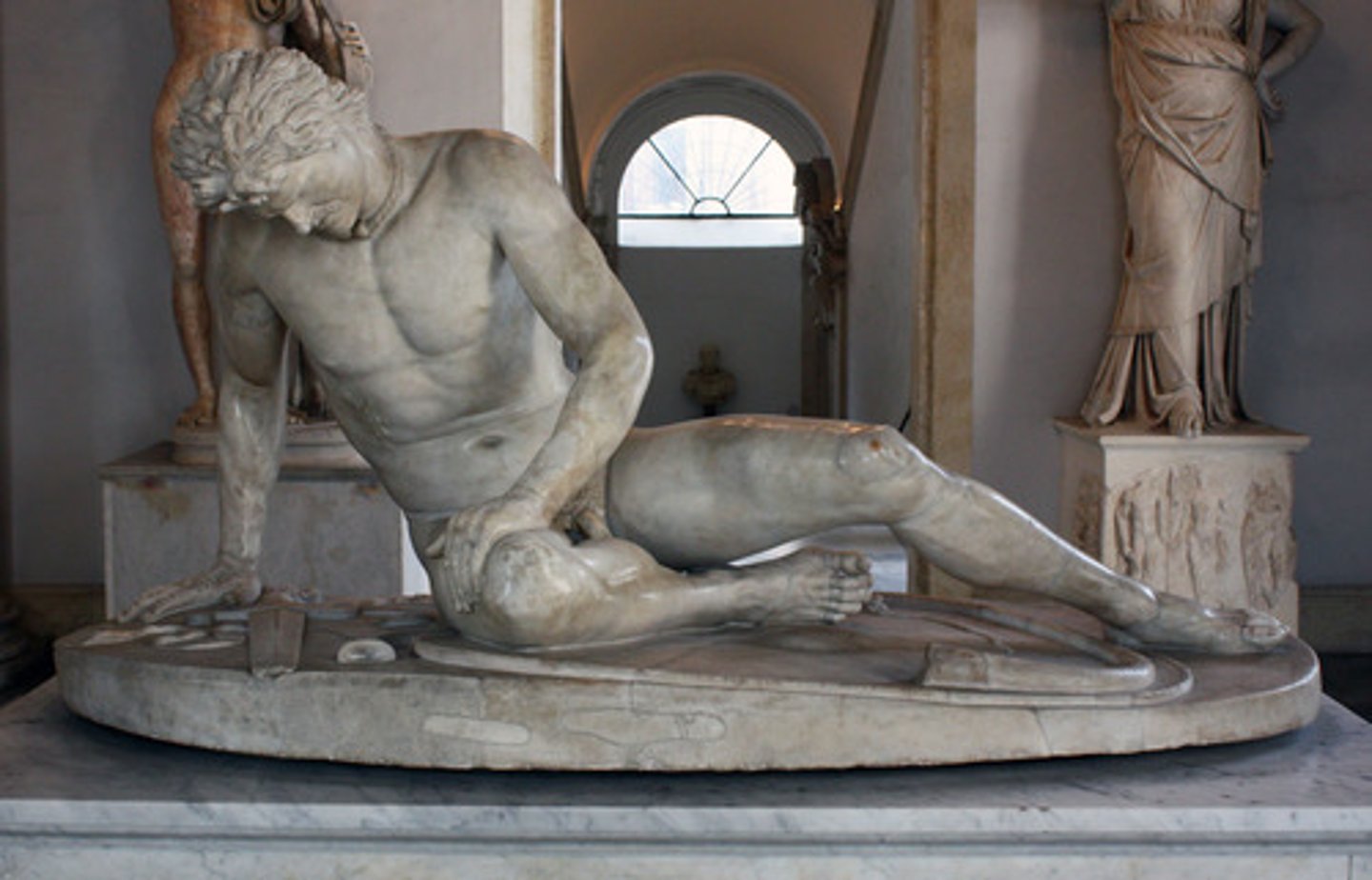
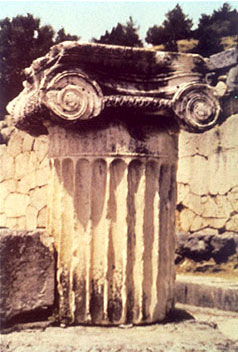
What kind of column is this?
Ionic
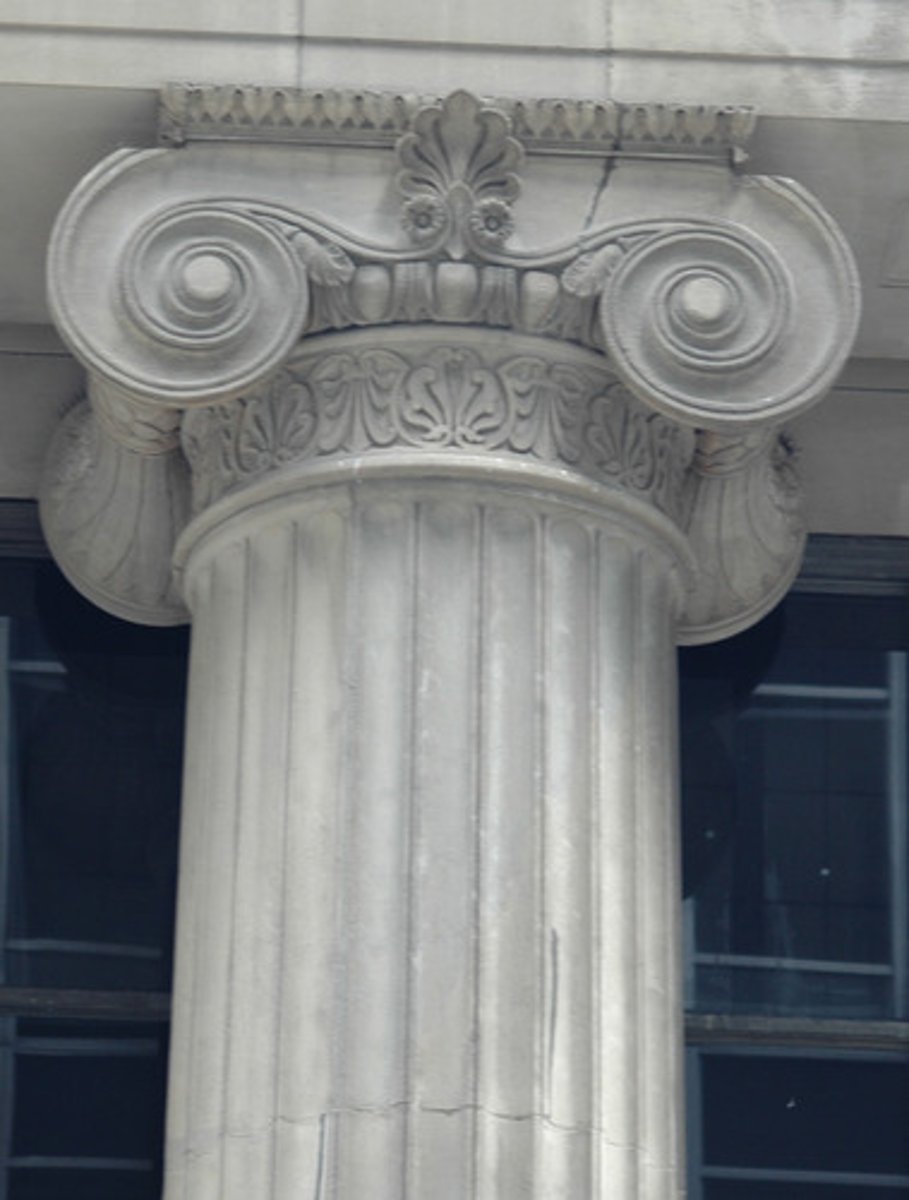
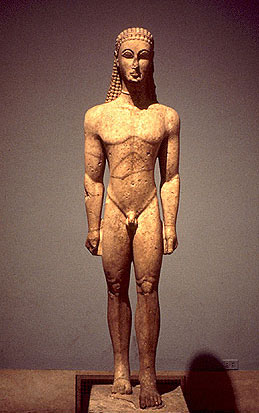
What is this kind of statue called?
Kouros
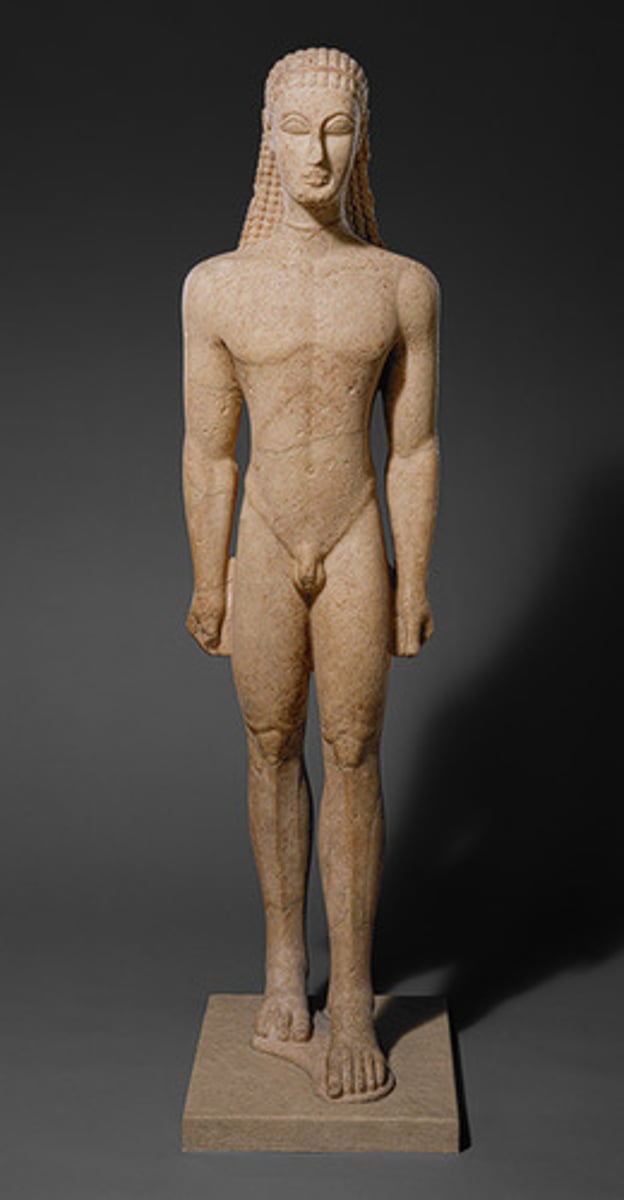
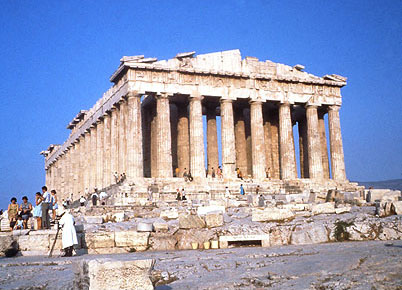
What is this building called?
The Parthenon
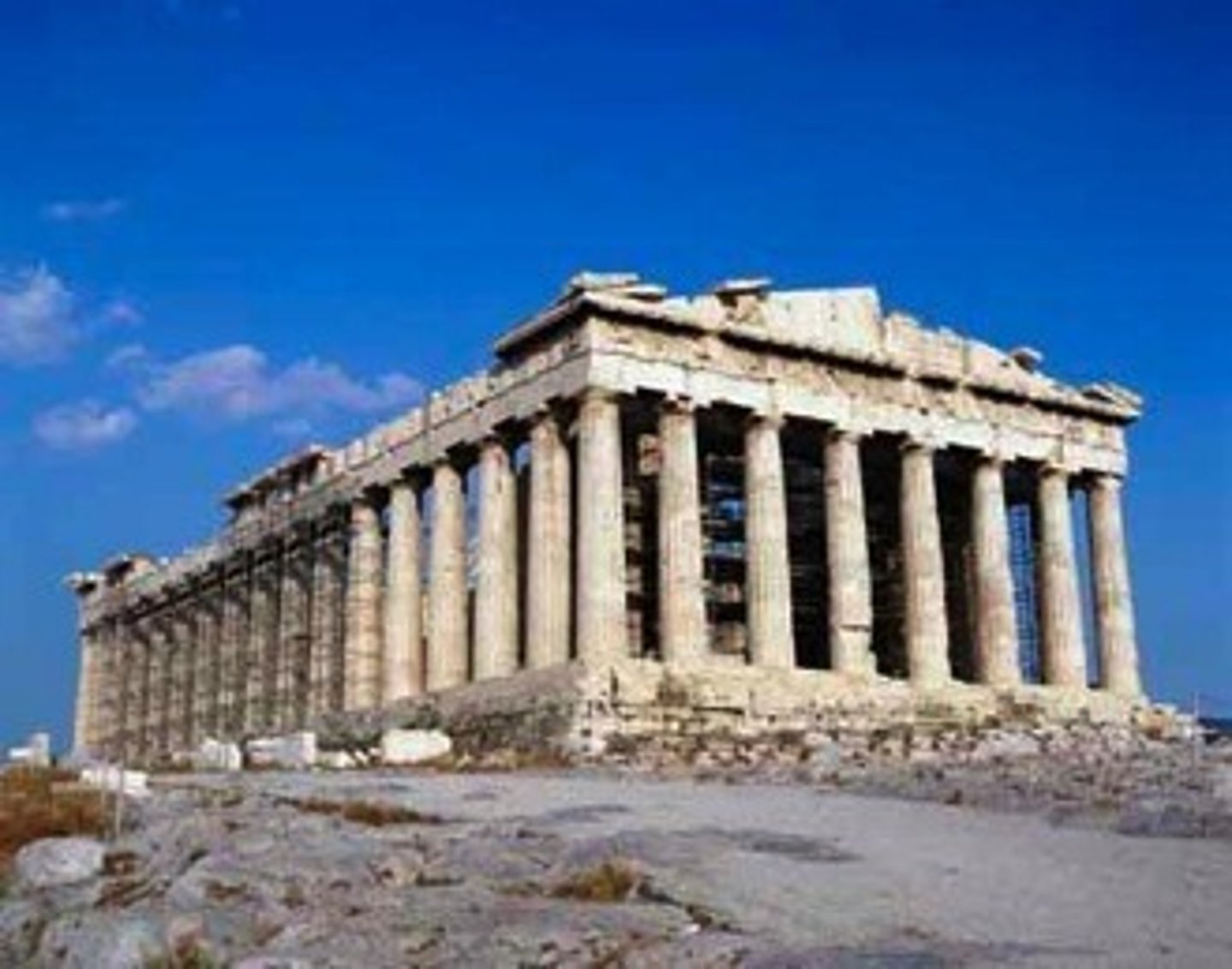
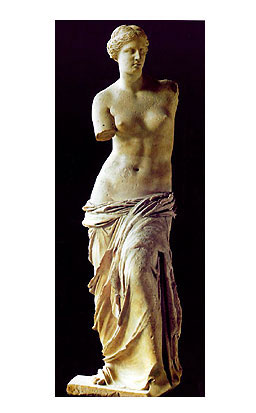
What is the name of this famous statue?
Venus de Milo
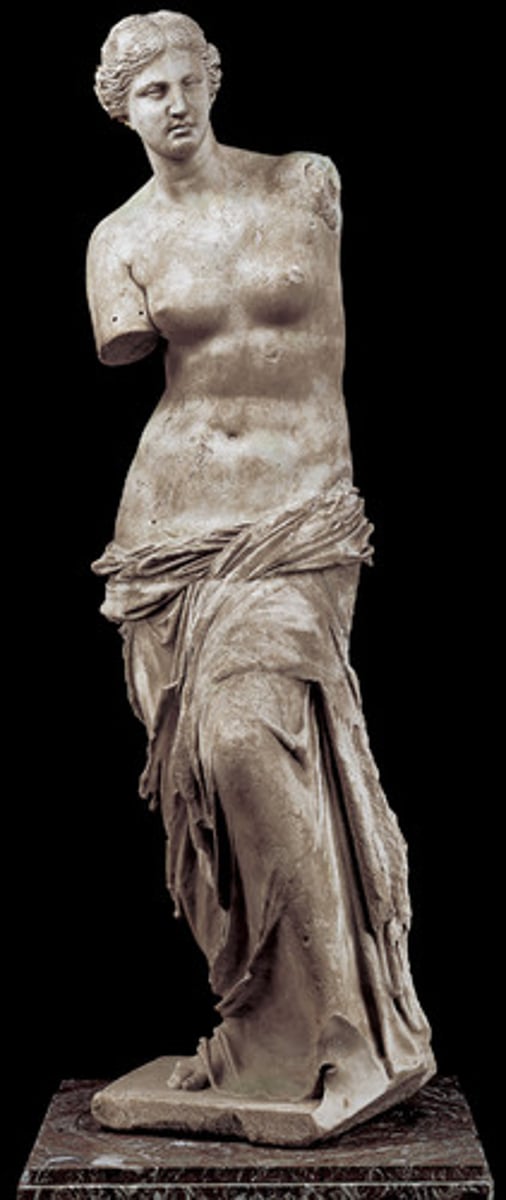
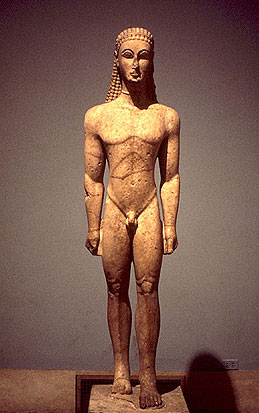
This statue's features are consistent with what style period?
The Classical Period
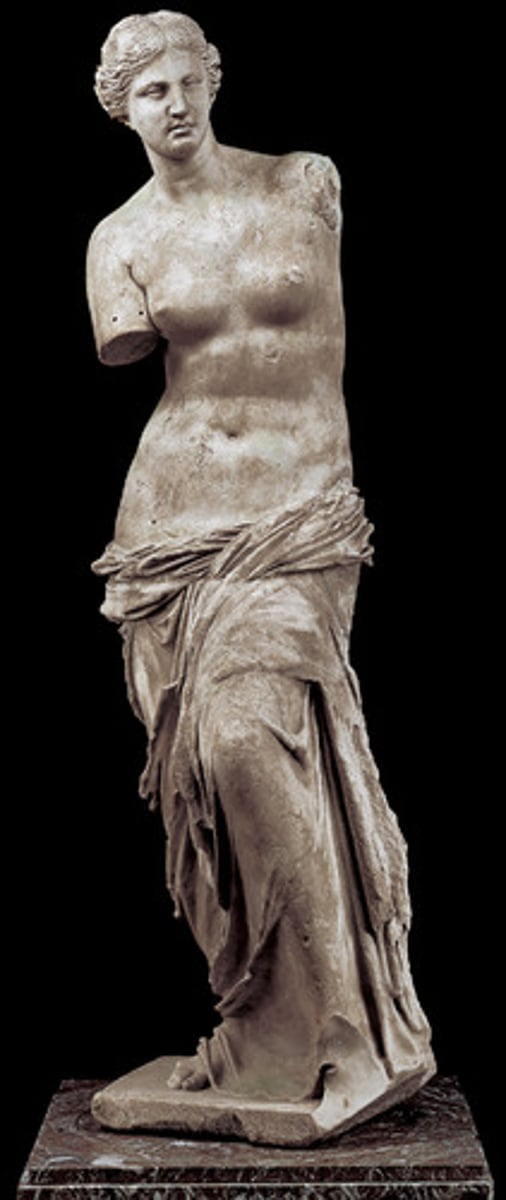
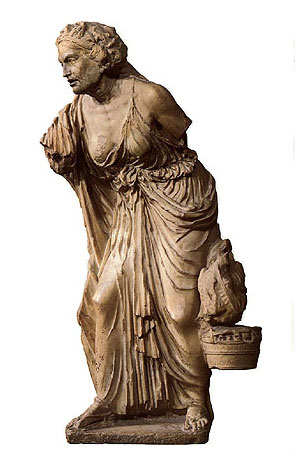
What time period is this statue from?
The Hellenistic Period
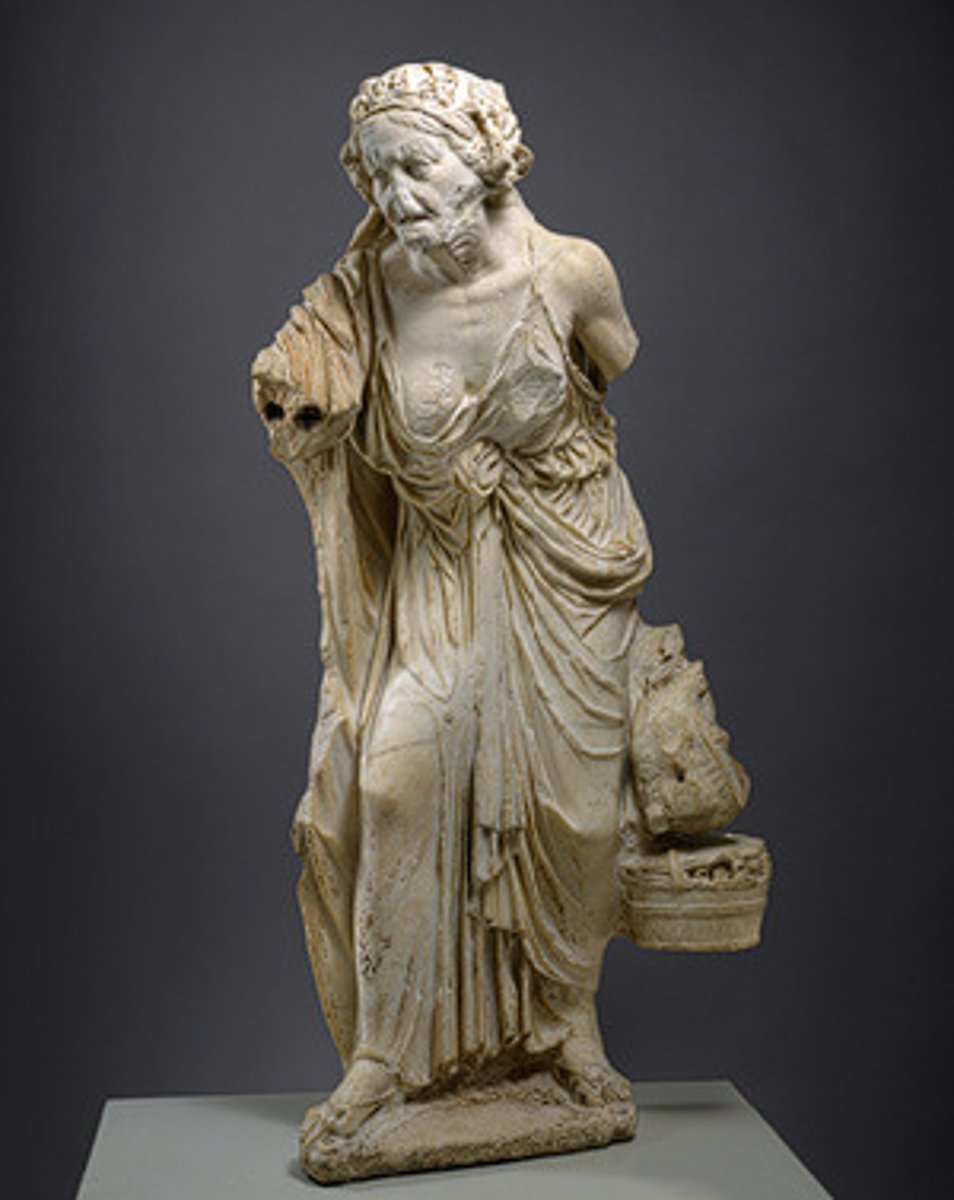
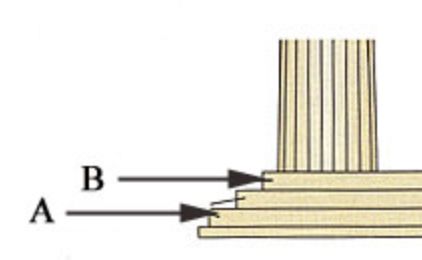
The top step of the platform that temples are constructed upon.
Stylobate
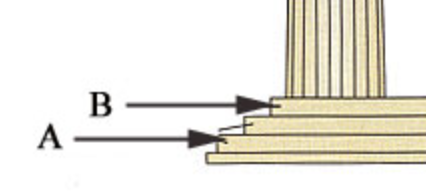
The bottom two steps of the platform that temples are constructed upon.
Stereobate
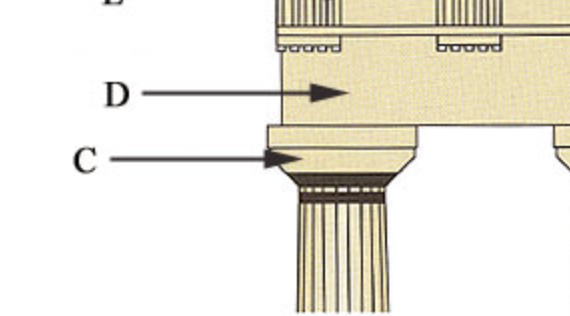
Top of column
Capital
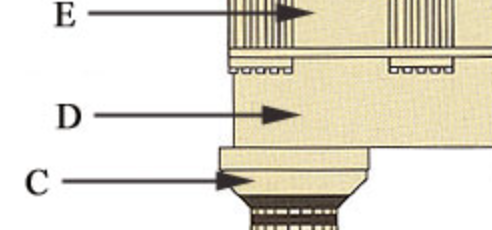
The horizontal lintel (beam) that is laid across the columns.
Architrave

A horizontal beam on top of the architrave that is carved.
Frieze

A horizontal beam on top of the frieze. The end of the cornice usually extends slightly beyond the frieze and the architrave.
Cornice
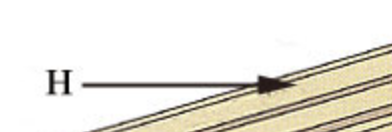
The sloping beams that were used to create the sloping roof.
Raking Cornice

The triangular part of the roof that was created by the raking cornices. It was usually carved.
Pediment